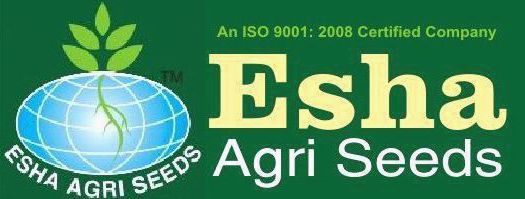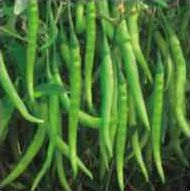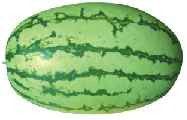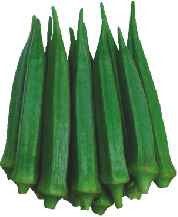
 |

| 
| 
| 
| 
|
A seeds success in the market depends primarily on its improved traits, which exemplify the R&D effort. Plant breeding the foundation of Esha Agri Seeds Pvt Ltd it creates a unique and marketable product through the strong research programme under the seasoned breeders and researchers, we develop seeds embodying such improvements as high yields, resistance to disease and pests, traits specific to regional agroclimatic conditions. Esha Agri Seeds Pvt Ltd has breeding programs for vegetable crops in various segments, stationed at different agro climatic zones. Main research activities are being at head office Hyderabad, Telangana, and in a vegetable research hub Bangalore, India.
The high costs associated with large-scale R&D limit it to a relatively small varieties commercially viable, highly competitive performance, yield, disease resistance, quality. Given the size of R&D investments, plant breeders play a central role in managing the entire production, distribution, and marketing processes, resulting in extensive vertical integration. economies of scale in R&D, marketing, and distribution.
Hybrid varieties play a vital role in increasing vegetable production due to their high yield potential, early maturing, superior quality and pest-resistance attributes. Tomato, eggplant, pepper, cucumber, muskmelon, watermelon, cabbage, cauliflower, carrot, etc. are important crops for which hybrids are available and adopted by Indian farmers.

Tomato (Solanum lycopersicum) Evaluation of Tomato Yellow Leaf Curl Virus (TYLCV) and
Fusarium Crown Rot (FCR) Resistant Tomato Variety under Commercial Conditions. The unprecedented growth in crop yields and agricultural total factor productivity over the years owes much to a series of innovations embodied in seeds, beginning with the development of hybrid crops. In this direction Throughout development, the company evolves as small businesses gave way to larger enterprises that integrated plant breeding, production, conditioning, and marketing functions. The company was further shaped by widespread expansions of areas adding new zones and personnel in the latter part of the rapid growth Research and development (R&D), shifting roles of agricultural Seed marketing.
The establishment of vegetable research infrastructure has led to the development of a number of improved hybrids and production, value addition.
This project is aimed at rapidly producing superior tomato varieties combining resistance to multiple diseases affecting tomato production. Six different disease resistance targets are being backcrossed into elite breeding lines phenotypic screens. Efforts are being made to by screening to identify recombination resistance traits have been separated. technologies have been developed for tomato to further speed up the rate of resistance gene integration. The resistance genes will be deployed in elite lines that are proven to perform well as parents of hybrid varieties.
Tomato varieties with improved resistance to multiple diseases are sources of genetic resistance to many critical diseases affecting tomato production have been identified within cultivated tomato germplasm and wild relatives and are available for deployment. these resistances are made available in less superior genetic backgrounds, and traits are sometimes linked with undesirable characteristics from the wild species from which they were derived to integrate resistance genes into commercially acceptable varieties.
The development of a new variety with resistance to a particular disease crossing a superior, susceptible breeding line with a resistance source (donor). Superior, resistant progeny are advanced and backcrossed to a superior, susceptible breeding line (recurrent parent). Considerable effort and time, repeated for the horticultural characteristics of the superior line are combined satisfactorily with the resistance of the donor. To integrate resistances to several diseases in multiple genetic backgrounds will be greatly simplified each trait into a common set of commercially tomato lines. A collection of elite lines developed by tomato breeding program are being used as recurrent parents for trait integration. This set consists of proven and promising inbred lines some having attributes such as heat tolerance, bacterial spot tolerance, and superior flavor which have comparable yield and horticultural
characteristics to commercially available varieties.

Chilli (Capsicum annuum) is an important commercial crop. Chilli breeding research has been given. Germplasm sources resistant to Chili/pepper leaf curl virus (ChiLCV)Chili veinal mottle virus (ChiMoV),Cucumber mosaic virus (CMV), anthracnose, bacterial wilt, nematode s and powdery mildew have been identified and used in current breeding programs. The northeast region has emerged as having a novel diversity in the cultivated species of the genus Capsicum . Nuclear and cytoplasmic male sterility system have been developed and exploited at commercial scale to develop hybrids and their seeds.The developmental accomplishments including national releases of commercial chilli cultivars (open pollinated varieties and hybrids) and dissemination of their seed has been discussed. Changes in climate and society are explored as they relate to chilli production; research across multiple sectors is advocated to address these and other concerns to boost the chilli industry. Our strong breeding program includes for pungent (chilli syn. hot pepper) and non-pungent (sweet pepper syn. capsicum, bell pepper) fruits. The cultivation of C. frutescens, C. chinense, and C. baccatum is limited and usually restricted to homestead gardening in different regions in India, the states of Andhra Pradesh, Karnataka, Maharashtra, Orissa and Tamil Nadu is our biggest market.
Our chilli hybrids for different market segments:
(i) Fresh market (green, red, multi -color whole fruits),
(ii) Fresh processing (sauce, paste, canning, pickling),
(iii) Dried spice (whole fruits and powder), and
(iv) Industrial extracts (paprika oleoresin, capsaicinoids and carotenoids).
Besides conventional nutritional food uses, a number of versatile food (paprika oleoresin) and non -food (defense, spiritual, ethnobotanical) uses of chillies.
In the post mostly involved in strategic research to develop improved varieties with limited dissemination efforts on seed multiplication, in development, promotion and commercialization of hybrid cultivars. the progress of chilli breeding research with future program Capsicum germplasm conservation and chilli improvement.

Watermelon (Citrullus lanatus) The continuous discovery of best possible combiners and their outcome has replaced the superior hybrids in watermelon. Breeding objectives carefully starts before cultivar development, by intercrossing the best cultivars currently available, also by crossing the best cultivars with accessions having one or more useful traits missing from the elite cultivars. Several types of watermelons are being breed and marketed with red flesh, some with yellow and differences in its shape and size round, oval, oblong. with seeds, seedless. Our program is adapting to fast changing market needs. The introduction of new watermelon hybrids have equipped us to deal with pest and pathogens. We contest soil pests as well as adverse environmental conditions. Use of male sterility reduce the cost of hybrid seed. Seed production employed good cultural practices and timely harvest. Watermelon has been improved by breeding into an early maturing, dwarf vines, more compact plant with large fruit having edible, sweet flesh, higher lycopene content, seedlessness, and new flesh colors, such as scarlet red, dark orange, and canary yellow, having disease resistance
Segments
'Jubilee', 'Allsweet', 'Black Diamond', 'Calsweet', and 'Crimson Sweet', for hybrids general wider adaptation.
The most popular diploid (seeded) cultivars and for triploid (seedless) cultivars
Breeding for the follow traits
Yield
Earliness
Fruit Type
External Fruit Quality
Internal Fruit Quality
Watermelon Rind Pickles
Seeds and Seedlessness
Fusarium Wilt Resistance
Anthracnose Resistance
Gummy Stem Blight Resistance
Powdery Mildew Resistance
Yellow Vine Resistance
Bacterial Fruit Blotch Resistance
Bacterial Rind Necrosis Resistance
Root Knot Nematode Resistance
Virus resistance
Fusarium wilt Races 0 and 1
Gummy stem blight
Powdery mildew
Bacterial fruit blotch
watermelon strain (watermelon mosaic virus)
zucchini yellow mosaic virus.
Internal quality traits include dark red flesh, high sugar content, proper sugar to acid ratio, excellent flavor, high nutritional value (vitamins and lycopene), firm (not soft) and non fibrous texture.

Okra (Abelmoschus esculentus L. Moench) Improving yield and sustainability under adverse conditions through resistant hybrids is the major objective of heterosis Esha Agri Seeds breeding. Crosses high specific combining ability (sca) and yield involved high general combining ability for plant height, number of nodes on the main stem, number of leaves per plant, fruit diameter, fruit weight, and number of fruits per plant and disease reaction besides under water limited conditions. The hybrids selected on the basis of their mean (per se) performance, heterosis manifested, and sca effects. Hybrids be used commercially due to high yield and low percentage disease index values for yellow vein mosaic virus (YVMV) disease. A linear relationship between okra production and the amount of water supplied is known to exist. The highest effect on yield when drought occur during flowering and pod formation. Genetic variability among genotypes is the most important component for the success of a breeding programme for increased drought resistance.
Estimation of type and amount of total genetic variability associated with the target traits is emphasized Determination of the type of genetic variability formulation of comprehensive breeding programme regarding the further improvement of the target trait.
Breeding efforts intense for finding drought related screening of large population with been exposed to drought stress , development in the reverse genetics has led to isolation of novel drought tolerant lines for the development of drought tolerance in okra.
Copyright © 2016 - All Rights Reserved - www.eshaagriseeds.com